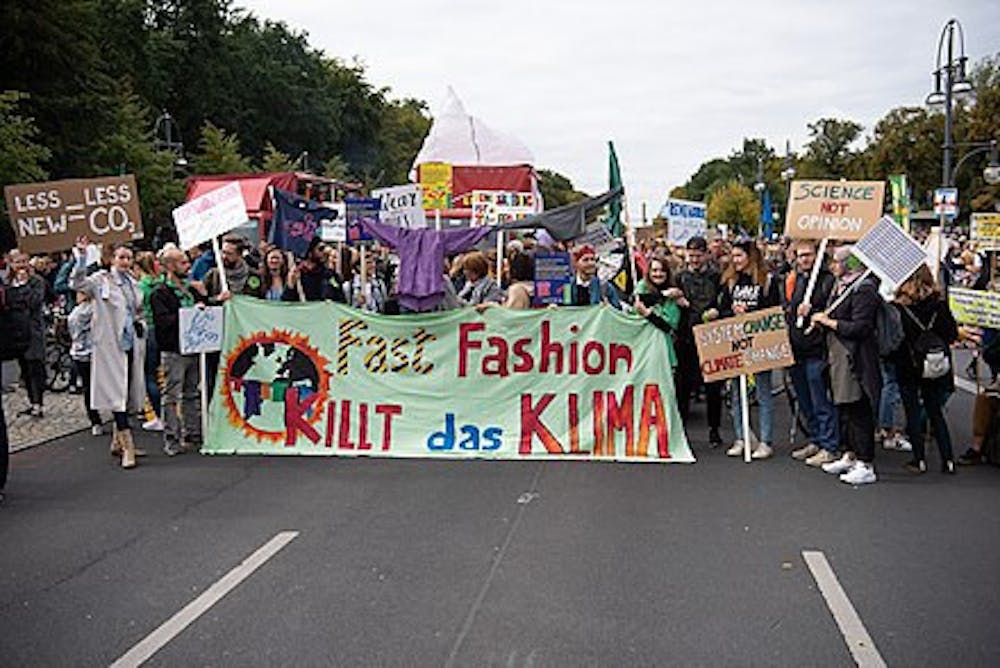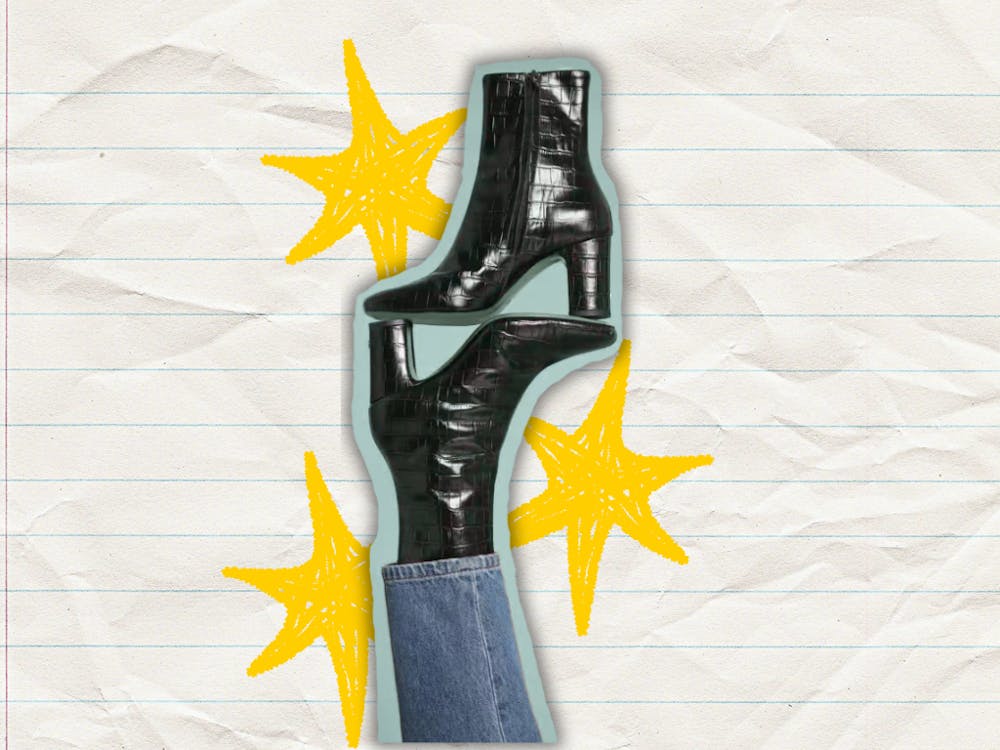Gen Z consumers are quick to purchase trendy, cheap clothing items, but there’s a cost.
Fast fashion is a retail strategy focused on producing affordable, trendy clothing quickly and cheaply. According to the UN Environment Programme (UNEP), the fashion industry is the second-biggest consumer of water and is responsible for 2-8% of global carbon emissions. Boohoo, H&M, Shein and Forever 21 are just some examples of clothing retailers that utilize fast-fashion practices.
It is imperative that fast fashion practices take more precedence in regard to international climate change initiatives — the source of which is consumerism.
Young people account for a majority of fast fashion purchases. According to BBC, more than 40% of 16 to 24-year-olds buy clothes online at least once a week. Spending totals on clothes vary widely across the globe, with British people spending the most.

This graph shows the average amount of money spent on fast fashion in various countries.
In 2019, the UN Alliance for Sustainable Fashion was created in an effort to tackle this ongoing environmental crisis. It partnered with UN bodies to promote and educate others on the risks of fast fashion within their countries.
There have been bills introduced within Congress and on the state level across the country, but the U.S. has yet to implement true legislation against fast fashion. Bills have been passed protecting the rights of garment workers, which is a step in the right direction.
The Fashioning Accountability and Building Real Institutional Change Act (The FABRIC Act) is the first federal fashion bill in the U.S.
Buying secondhand clothing is a prime example of how to reduce the consumerism of fast fashion. Companies such as Poshmark, Depop and Facebook Marketplace make it easy to buy and sell clothing items and accessories. Thrift stores are another popular option to either pass on or purchase clothes for a reduced price.
Clothing rental companies have been on the rise as an alternative to fast fashion shopping. Rent the Runway, Nuuly and FashionPass offer clothing rentals for different time durations and categories of clothing.
Rather than shopping at Forever 21 for a particular item you’ll only wear once, these rental companies are great opportunities to constantly cycle through a wardrobe without the harmful effects of fast fashion.
Fast fashion’s environmental impact on the world cannot be ignored any longer. Companies have evolved and proven that sustainability within fashion is achievable through smart practices.
Enjoy what you're reading?
Signup for our newsletter
It is now time for government agencies to follow suit and enact proper legislation. The choices global powers make today will determine the fashion industry’s role in creating more environmentally friendly practices for the future.




